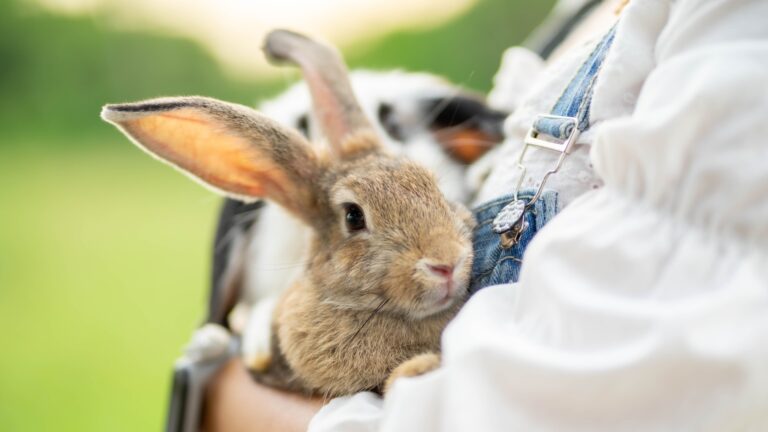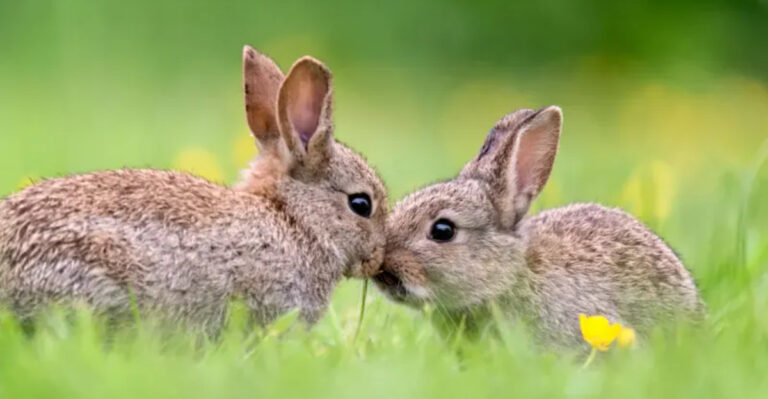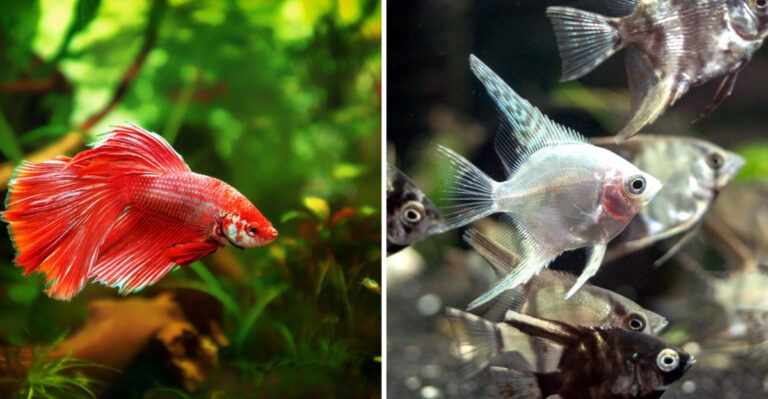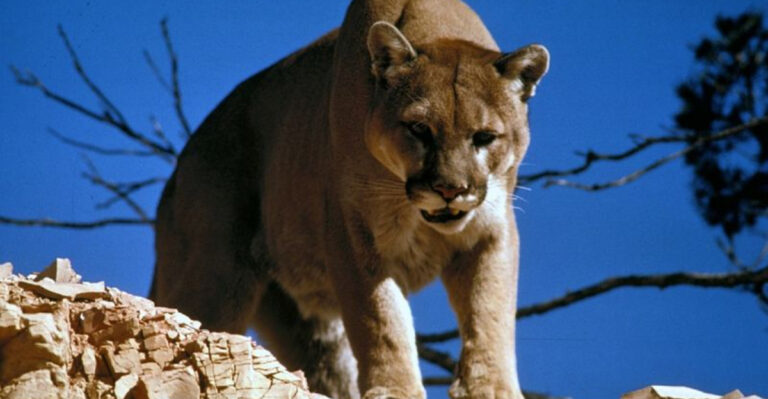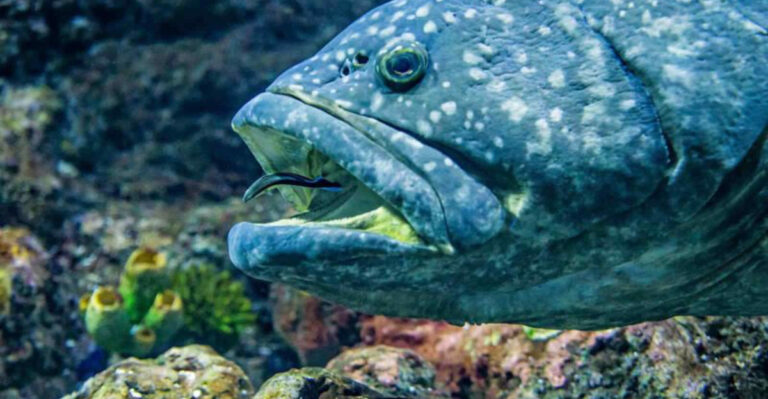27 Cat Facts That Will Make You Sound Like A Feline Expert
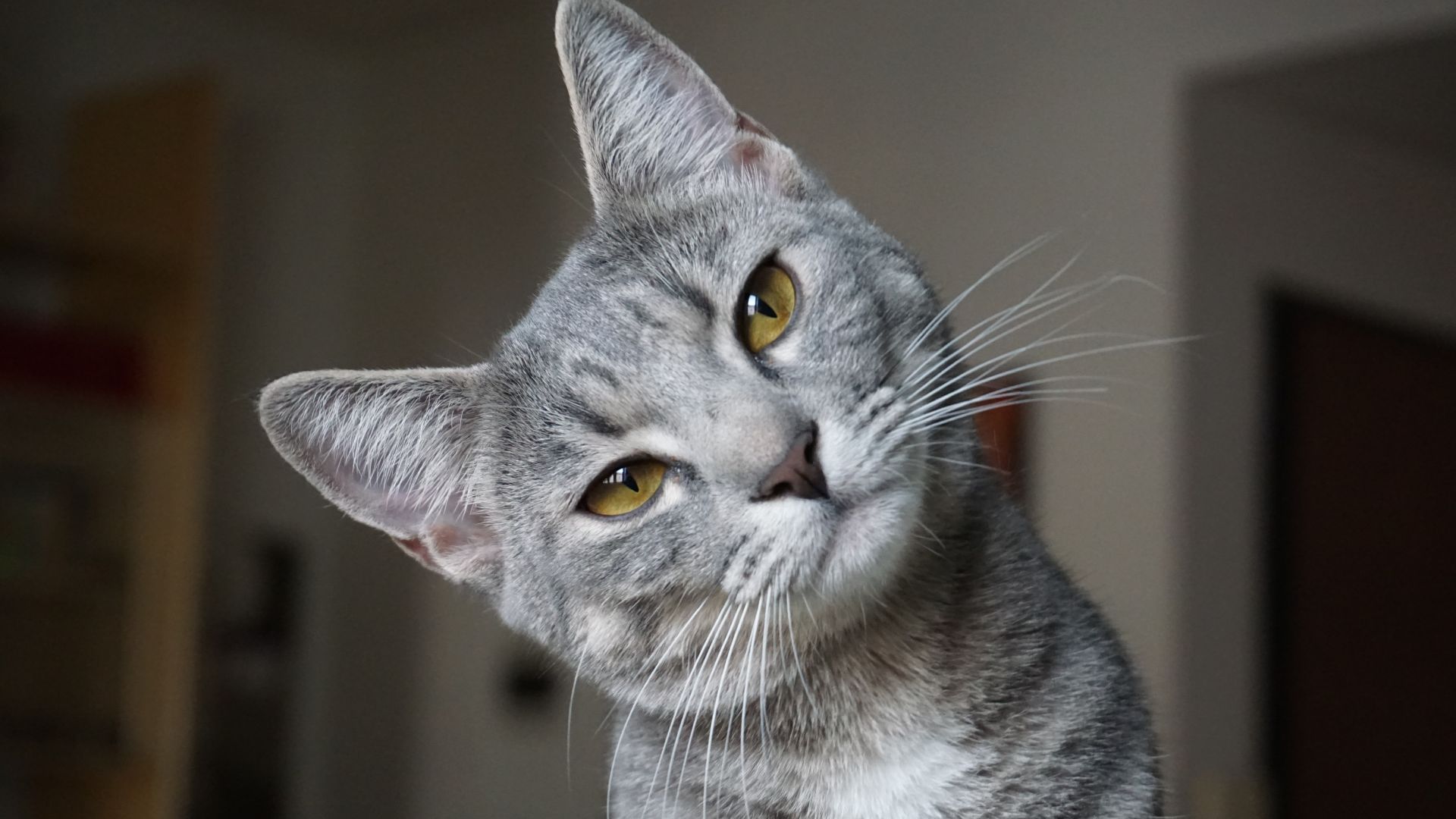
Think you know cats? Think again. Beneath those twitchy whiskers and fluffy tails lies a world of surprising secrets and quirky behaviors most people overlook.
From their ancient history to their strange sleeping habits, cats are full of mysteries waiting to be unraveled.
Whether you’re a lifelong cat lover or just looking to impress your friends, these facts will have you sounding like a true feline expert in no time.
1. Cats Have Whisker Sensitivity
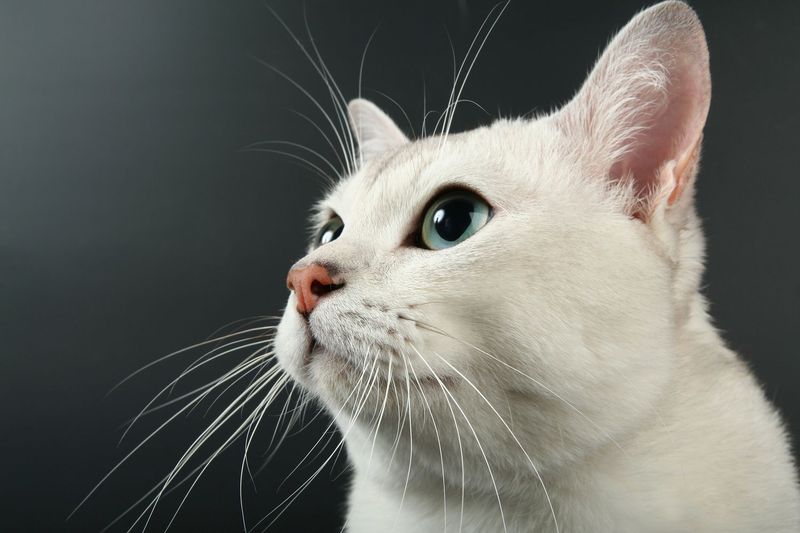
Cats’ whiskers are not just for show; they are highly sensitive tactile hairs. These specialized hairs, known as vibrissae, are embedded deep in the cat’s skin and are rich in nerve endings.
This heightened sensitivity allows cats to detect changes in their surroundings, navigate in the dark, and even sense nearby objects without touching them.
Interestingly, a cat’s whiskers are roughly as wide as its body, helping it gauge whether it can fit through tight spaces. Whiskers also aid in hunting, as they can sense the movement of prey.
It’s crucial never to trim a cat’s whiskers, as this can disorient the animal and lead to anxiety. Whiskers naturally shed and regrow, so there’s no need to intervene.
Understanding the importance of whiskers can enhance how we interact with our feline companions, ensuring their comfort and well-being. Whiskers are truly a marvel in feline anatomy.
2. They Purr For Various Reasons
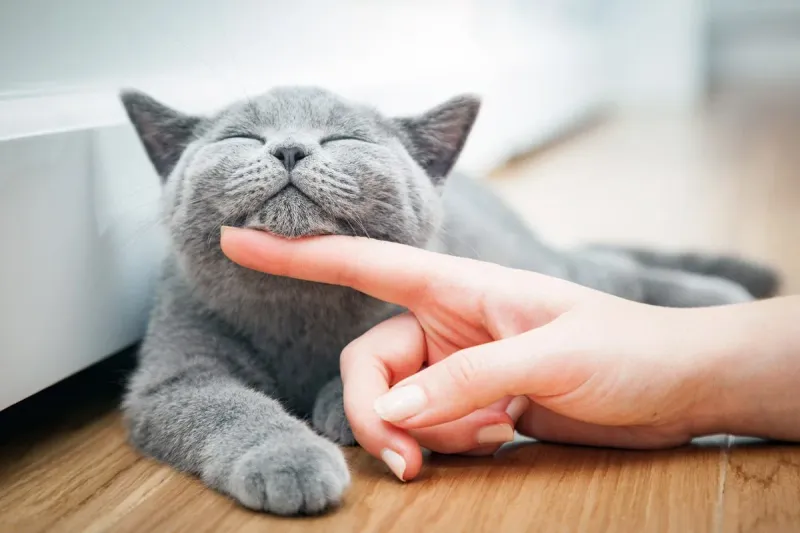
Purring is often associated with a cat’s contentment, but it serves multiple purposes.
Cats also purr when they are scared, in pain, or even in their final moments. This soothing sound may help them manage anxiety and pain, acting as a self-healing mechanism.
Purring occurs when rapid movements of the laryngeal muscles cause a sudden separation of the vocal cords, resulting in the characteristic sound.
Some researchers believe that the frequency of purring, between 25 and 150 Hertz, promotes healing and bone regeneration. Cat owners often find the sound comforting, and it can create a calming environment for humans too.
While purring is most common in domestic cats, some wild cats also exhibit this behavior. Recognizing the different contexts of purring can deepen our understanding of feline emotions and responses. It’s a complex and beautiful aspect of cat communication.
3. Cats And Their Unique Gait
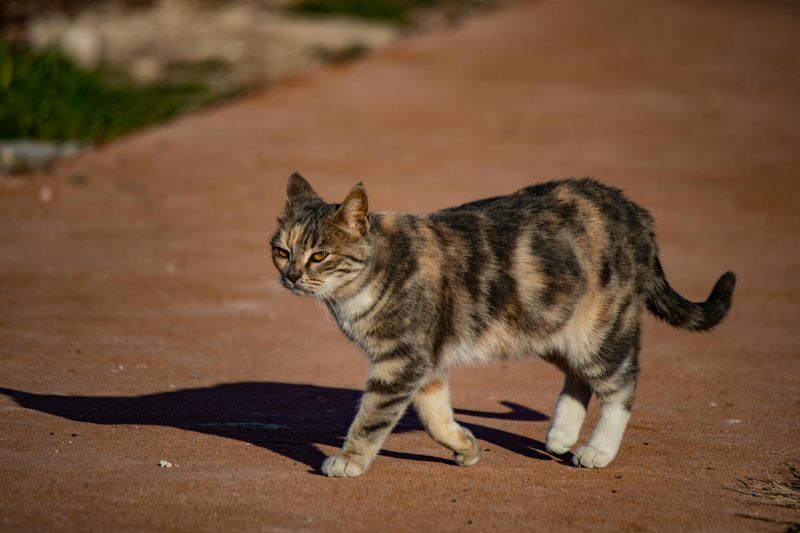
Cats possess a gait that is distinct from many other animals. They walk using a “pacing” gait, where the left hind leg moves in unison with the left front leg, and the same happens on the right side. This movement pattern is shared by camels and giraffes, making it quite rare.
This unique way of walking allows cats to move silently and with precision, an adaptation that aids in stalking prey. The quiet movement is also beneficial for evading predators in the wild.
When observing a cat, you’ll notice how gracefully they navigate different terrains, whether it’s a slippery surface or rugged ground. Their pads act as shock absorbers, adding to their stealthy stride.
Understanding a cat’s gait can provide insights into its evolutionary advantages and survival skills. It’s a testament to the intricate design of feline anatomy.
4. Their Ears Can Rotate 180 Degrees
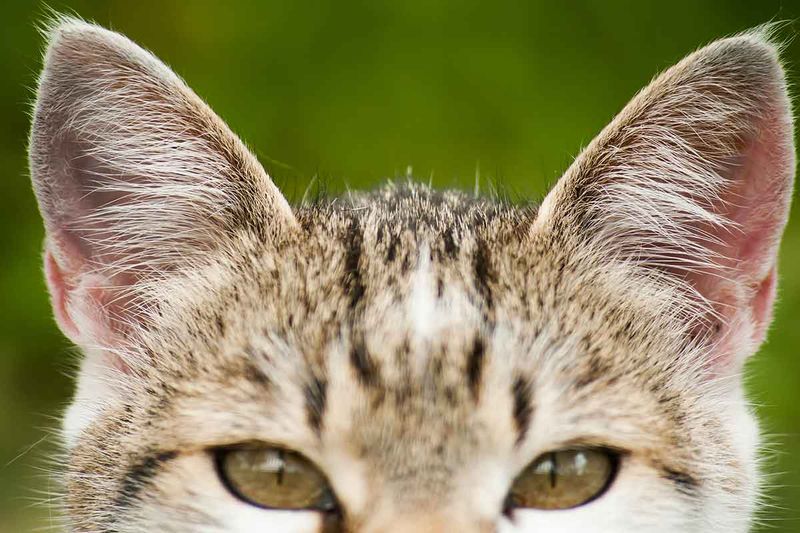
A cat’s ears are not just for hearing; they are highly mobile and capable of rotating up to 180 degrees. This remarkable flexibility allows cats to pinpoint the origin of a sound with incredible accuracy.
Each ear moves independently, enabling cats to hear sounds from different directions simultaneously. This skill is particularly useful for hunting, as it helps them detect prey from afar.
The ear’s structure includes 32 individual muscles, making it one of the most complex anatomical features in cats.
This ability to rotate their ears is not only essential for survival but also enhances their social interactions by expressing emotions.
Observing a cat’s ear movements can offer valuable insights into its mood and attentiveness, illustrating another layer of feline complexity.
5. Cats Have A Territorial Nature
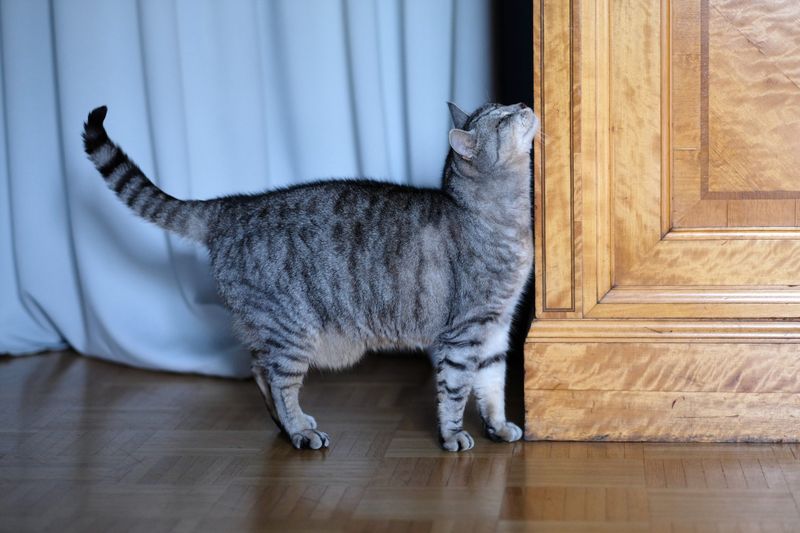
Cats are known for their territorial behavior, often marking their space to establish ownership. They achieve this through scent marking, using glands located on their cheeks, paws, and tail base.
When a cat rubs against furniture or people, it leaves its scent behind, a method of claiming territory and creating a familiar environment. This behavior is not just about possession; it provides a sense of security and comfort.
In multi-cat households, territorial disputes can arise, leading to tension and stress. Understanding this aspect of feline behavior can help in managing such situations, ensuring harmony among pets.
Providing ample resources and designated spaces for each cat can reduce conflicts. Recognizing a cat’s territorial instincts is vital for fostering a peaceful cohabitation, making it an essential part of cat ownership.
6. They Have A Strong Hunting Instinct
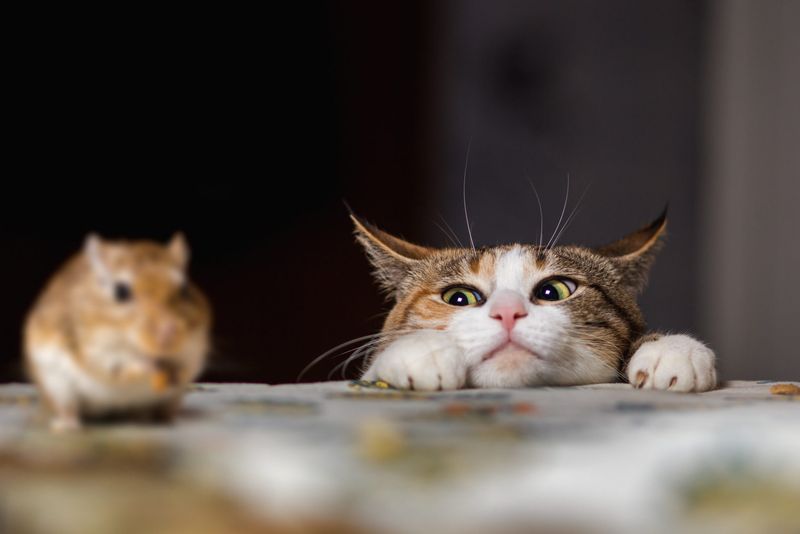
Despite domestication, cats have retained their strong hunting instincts. This drive is evident in their play behavior, where they often stalk, pounce, and bat at toys. These activities mimic the hunting process in the wild.
Cats are crepuscular hunters, meaning they are most active during dawn and dusk. This trait is a remnant of their ancestors, who hunted small prey like rodents and birds at these times. Understanding this can help cat owners provide appropriate stimulation for their pets.
Engaging a cat’s hunting instinct through interactive play is crucial for mental and physical well-being. It can prevent boredom and related behavioral issues.
Encouraging these natural behaviors allows cats to express themselves fully and maintain a healthy lifestyle. This connection to their wild heritage is a fascinating aspect of feline behavior.
7. Cats Communicate With Body Language
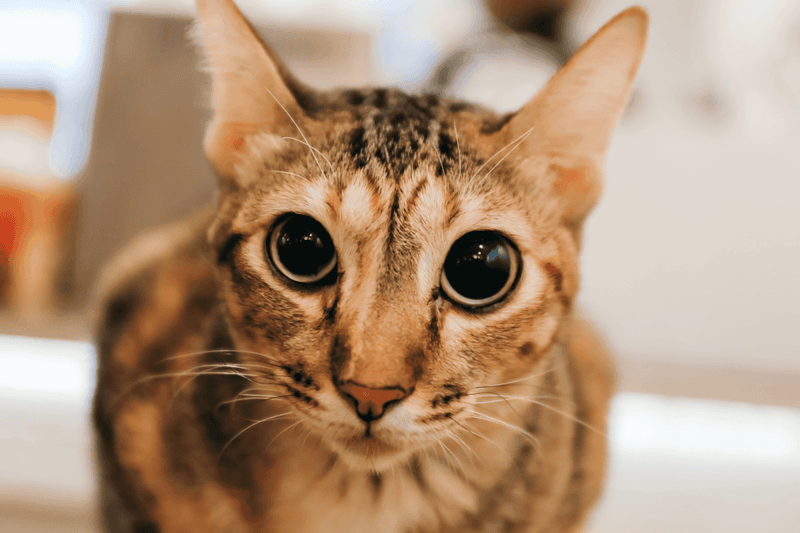
Cats are masters of non-verbal communication, using body language to convey their feelings and intentions. From the position of their ears to the flick of their tail, every movement holds meaning.
A cat’s eyes can speak volumes – slow blinking is a sign of trust and affection, while dilated pupils may indicate excitement or fear.
The tail also plays a crucial role; a high, upright tail signifies confidence, whereas a low, tucked tail might suggest anxiety.
Observing a cat’s body language can strengthen the bond between owner and pet, as it helps in understanding their needs and emotions.
Recognizing these signals allows for more effective communication, leading to a harmonious relationship. It’s a remarkable way cats connect with their environment and those around them.
8. They Are Crepuscular Creatures
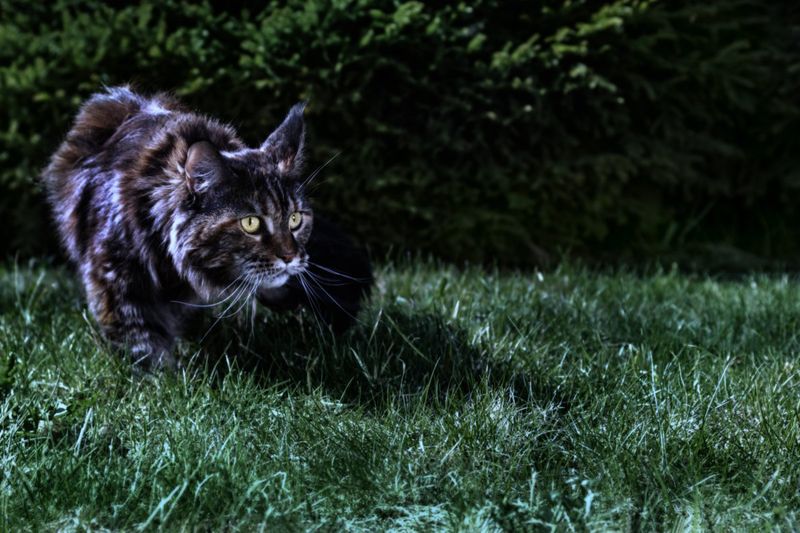
Cats are naturally crepuscular, meaning they are most active during the early morning and late evening. This behavior is rooted in their wild ancestry, where hunting at dawn and dusk provided the best opportunities for catching prey.
While domesticated cats have adapted to human schedules, many still exhibit increased activity during these hours. This can include playful antics, exploration, or heightened alertness.
Understanding a cat’s crepuscular nature can help in managing their energy levels and providing appropriate engagement. Creating a stimulating environment during their peak activity times can enhance a cat’s well-being.
Providing toys or interactive play sessions in the morning and evening can satisfy their natural instincts. It’s an intriguing aspect of feline life, reflecting their connection to their wild counterparts.
9. Felines And Their Unique Vocal Range
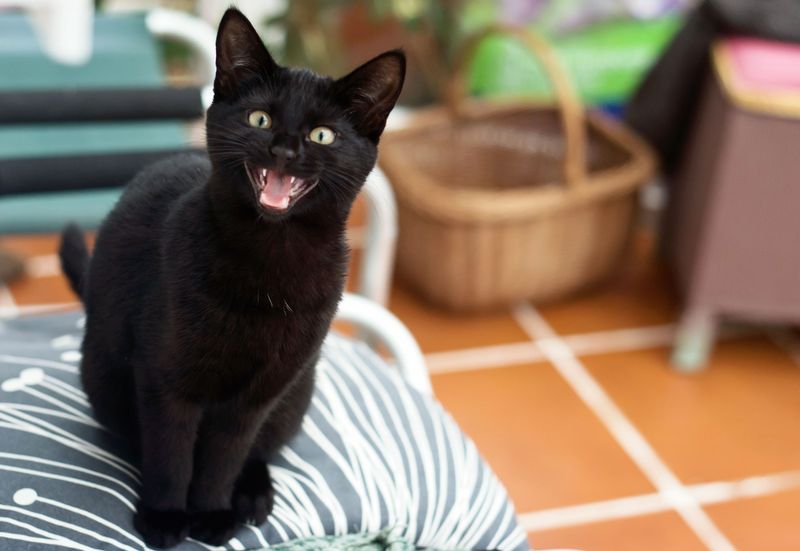
Cats possess a diverse range of vocalizations, each serving a distinct purpose. From meows and purrs to chirps and growls, they use sounds to communicate with humans and other animals.
Interestingly, adult cats primarily meow to interact with people, as they rarely use this sound with each other. The tone, pitch, and frequency of a meow can convey different messages, helping owners understand their pet’s needs.
Recognizing and responding to a cat’s vocal cues can enhance the bond between owner and pet, fostering a deeper connection. It’s a fascinating aspect of feline communication, highlighting their adaptability and intelligence.
Understanding these vocalizations opens a window into their world, making interactions more meaningful.
10. Cats Have Retractable Claws
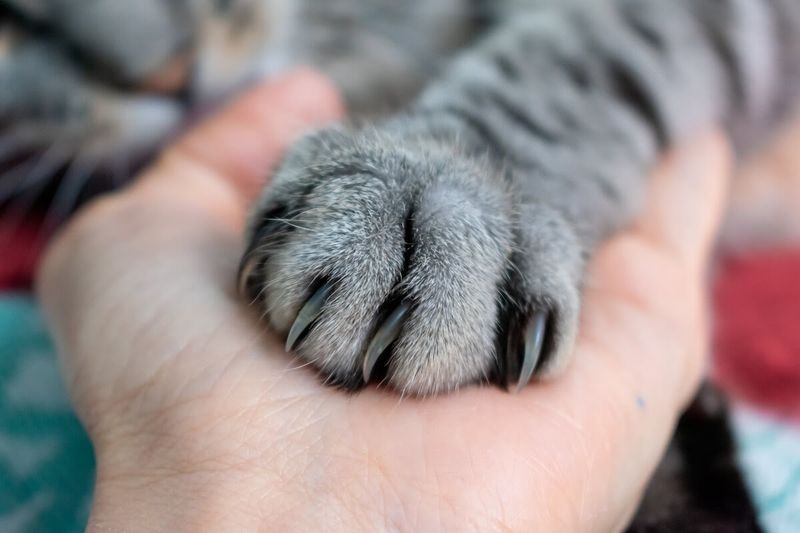
Cats have retractable claws, a feature that sets them apart from canines and other animals. This adaptation allows them to keep their claws sharp for hunting and climbing, while also protecting them from wear and tear.
When at rest, a cat’s claws are hidden within the paw pads, extending only when needed for defense, climbing, or traction. This ability to retract claws is crucial for stealth, enabling cats to move silently while stalking prey.
Regular nail trimming and providing scratching posts can help maintain a cat’s claw health. Understanding this anatomical feature can deepen our appreciation for their natural abilities and survival strategies. It’s a unique trait that showcases the remarkable design of feline evolution.
11. Their Extraordinary Jumping Ability Is No Joke!
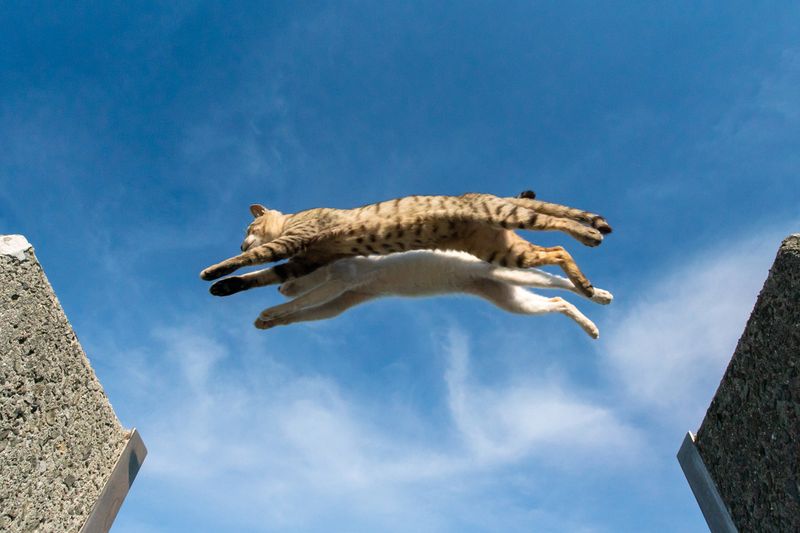
Cats are renowned for their extraordinary jumping skills, able to leap up to six times their body length. This impressive feat is due to their powerful hind leg muscles, flexible spine, and keen sense of balance.
A cat’s jumping ability is integral to its hunting strategy, allowing it to surprise prey and navigate various terrains. This skill also aids in escaping potential threats, showcasing their agility and adaptability.
Providing vertical spaces, like cat trees or shelves, can satisfy a cat’s natural inclination to jump and climb. It encourages exercise and mental stimulation, essential for a healthy and happy feline.
Observing a cat in motion is truly a wonder, reflecting their evolutionary prowess and connection to their wild ancestors.
12. Cats Have A Unique Drinking Technique
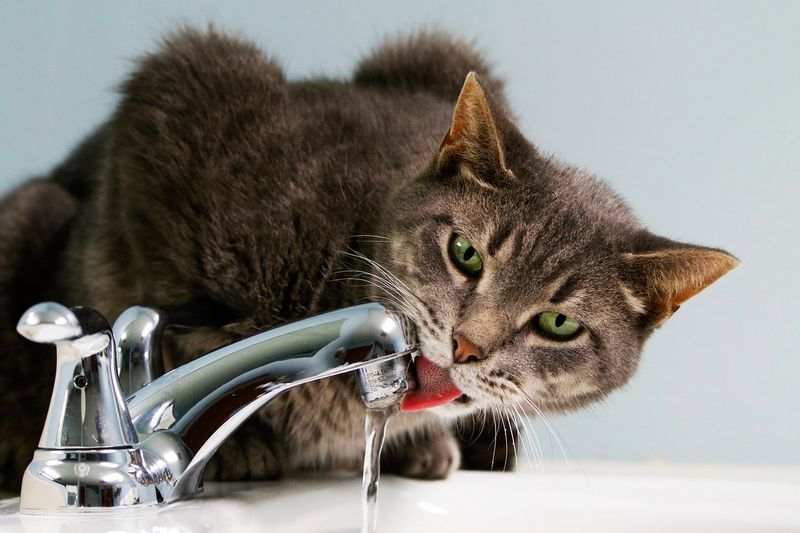
Cats employ a unique technique when drinking liquids, using only the tip of their tongue.
Unlike dogs, which scoop water, cats delicately touch the surface of the liquid and quickly retract their tongue. This creates a column of liquid that they then snap their jaws shut around to swallow.
This fascinating method is both elegant and efficient, showcasing the precision and grace inherent in feline behavior. It’s a subtle reminder of their wild ancestry, where such skills were essential for survival.
Providing fresh water and observing this behavior can enhance the connection between owner and pet, offering insight into their natural habits.
Understanding the intricacies of a cat’s drinking style adds another layer to the appreciation of these remarkable creatures.
13. Their Impressive Night Vision Is Truly Impressive!
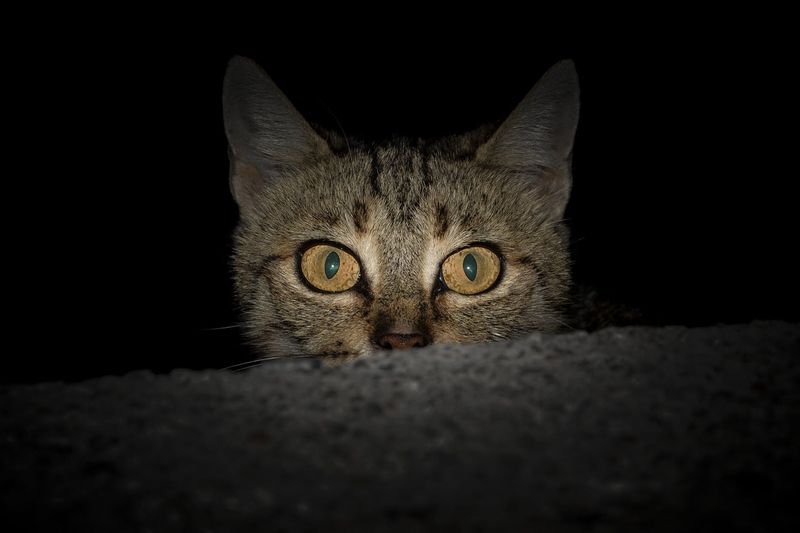
Cats are equipped with exceptional night vision, allowing them to see in light levels six times lower than what humans need. This ability is due to a layer of cells in their eyes called the tapetum lucidum, which reflects light back through the retina.
This adaptation is vital for hunting during dawn and dusk when visibility is limited. It enables cats to detect movement and identify prey in near darkness. Understanding this aspect of feline biology can explain their preference for low-light environments.
While cats can’t see in complete darkness, their enhanced vision makes them proficient nocturnal hunters. Providing appropriate lighting in a domestic setting can cater to their natural preferences. It’s a testament to their evolutionary success and adaptability in the wild.
14. Cats Have A Strong Sense Of Smell
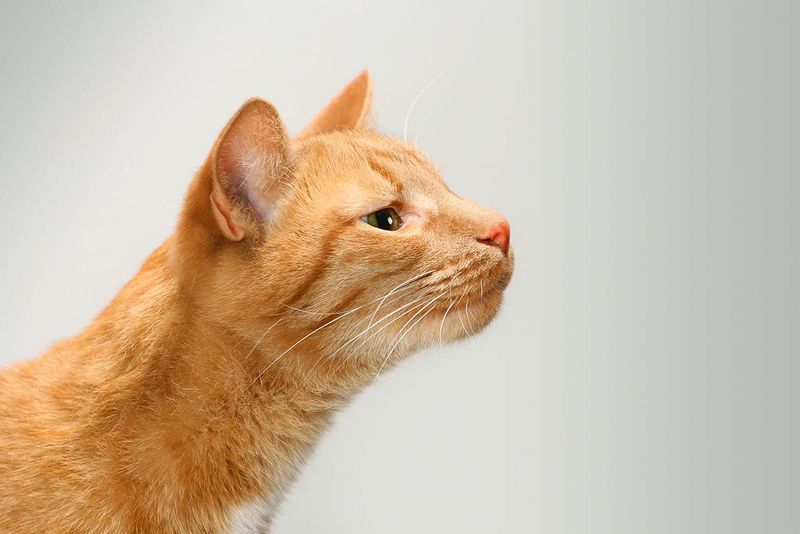
Cats possess a highly developed sense of smell, which is integral to their survival and daily interactions. With approximately 200 million odor-sensitive cells, they can detect scents that are imperceptible to humans.
This acute sense of smell helps cats identify food, locate mates, and recognize territory. It also plays a role in social bonding, as cats often greet each other with nose-to-nose contact.
Understanding this sensory ability can enhance how we interact with our feline companions. Providing scent-based enrichment, like catnip or scented toys, can stimulate a cat’s olfactory senses and offer mental stimulation.
It’s another fascinating aspect of their biology, reflecting their connection to their wild counterparts.
15. Felines And Their Distinct Grooming Behavior
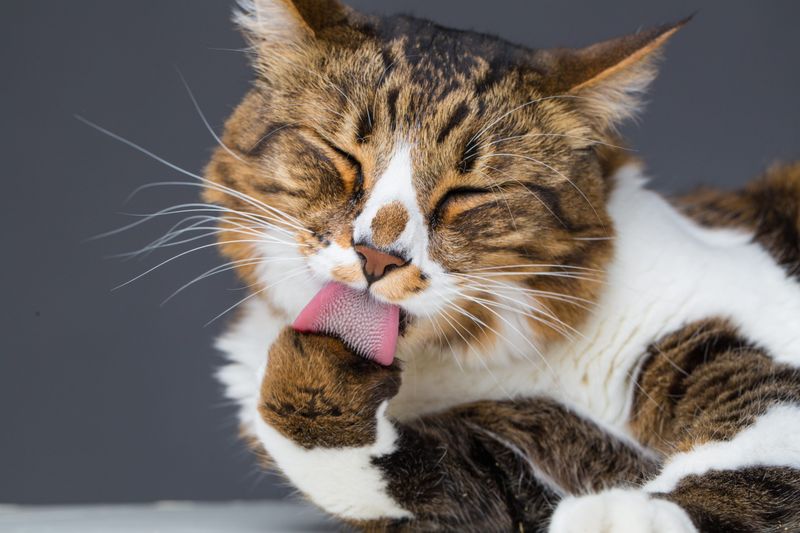
Cats are meticulous groomers, spending a significant portion of their day cleaning themselves. This behavior is not just about hygiene; it also helps regulate body temperature and stimulates blood circulation.
By licking their fur, cats can remove loose hair, dirt, and parasites. Their tongues have tiny, hook-like structures called papillae, which aid in this process. This grooming ritual is also a form of stress relief and relaxation for cats.
Understanding a cat’s grooming habits can offer insights into its well-being. Excessive grooming may indicate stress or health issues, while a lack of grooming could signal illness.
Observing these behaviors can help owners provide the necessary care and attention. It’s a vital aspect of feline life, showcasing their independence and attention to detail.
16. Cats Aren’t As Solitary As Many Believe
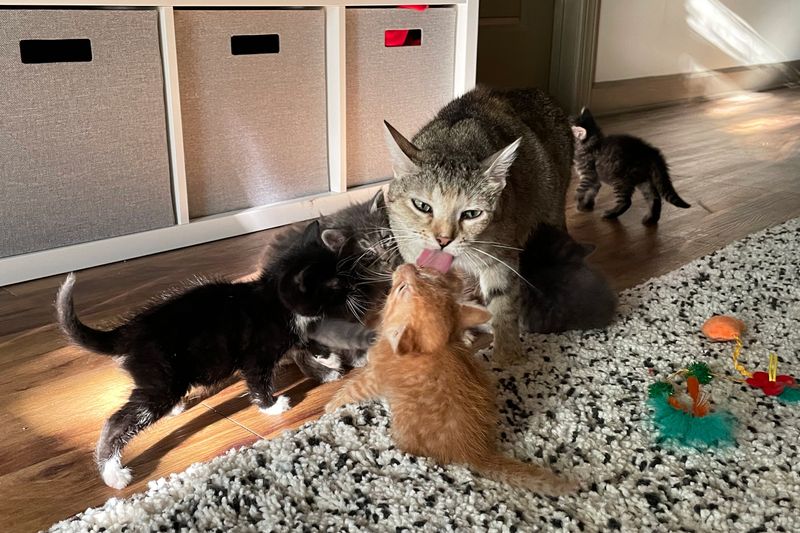
Cats have a unique social structure that is different from many other animals. While they are often seen as solitary creatures, they can form complex social bonds, especially in multi-cat households or feral colonies.
These social groups are usually matriarchal, with female cats and their offspring forming the core of the community. Males often live on the outskirts, participating during mating season.
Understanding this structure can help manage multi-cat environments and reduce conflicts. Providing resources like food, litter boxes, and space can cater to their social needs.
Recognizing the nuances of cat social interactions can enhance how we care for them, ensuring a harmonious environment. It’s an intriguing aspect of feline behavior, reflecting their adaptability and intelligence.
17. Cats Have A Unique Set of Vocal Cords
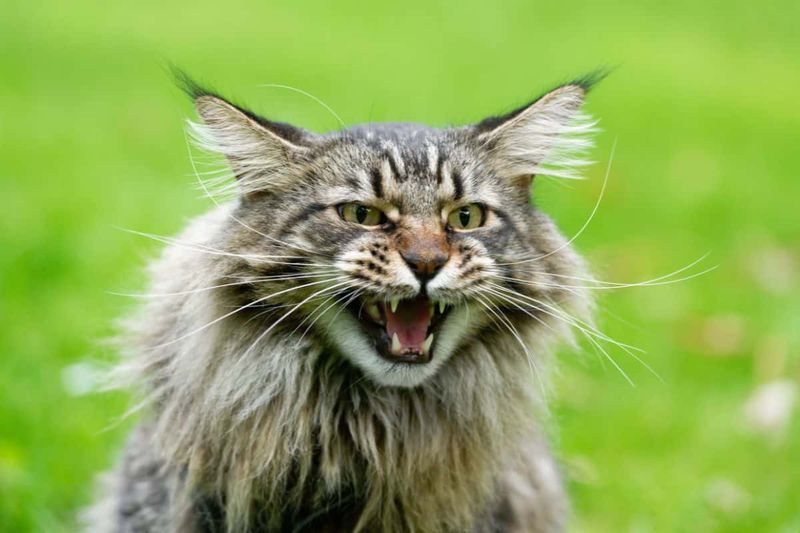
Cats possess a unique set of vocal cords that allow them to produce a wide range of sounds.
Unlike other animals, cats have both true and false vocal cords. The true cords produce the typical meows and purrs, while the false cords create grunts and growls.
This dual set of cords gives cats the ability to communicate in various ways, adapting their sounds to different contexts and needs. Understanding this feature can enhance how owners interpret their cat’s vocalizations.
Recognizing the different sounds and their meanings can improve interactions between humans and cats, fostering a deeper connection. It’s a fascinating aspect of feline anatomy, highlighting their complexity and adaptability.
18. They Have A High Metabolism
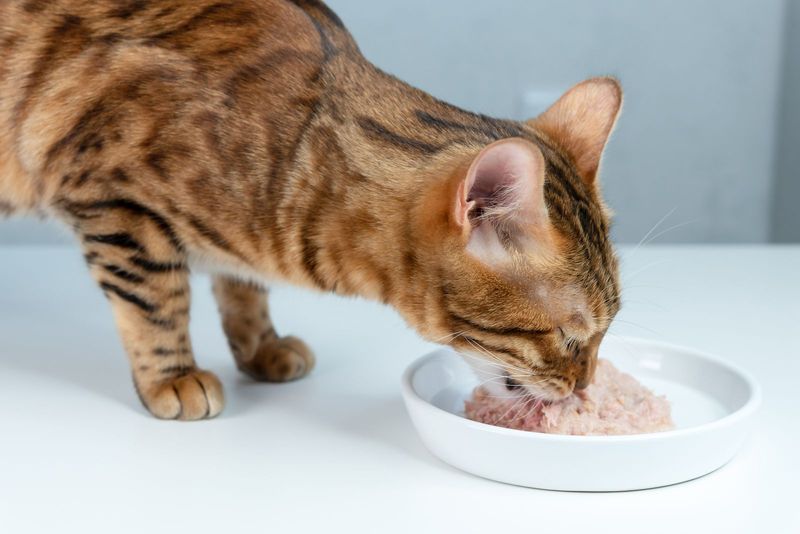
Cats have a high metabolism, which influences their dietary needs and energy levels. This fast metabolic rate allows them to convert food into energy quickly, fueling their active lifestyles.
This means that cats require a diet rich in proteins and fats, as they are obligate carnivores. Feeding them appropriate meals can support their metabolism and overall health.
Understanding this aspect can guide pet owners in providing the right nutrition.nnEngaging in regular play and exercise can help maintain a cat’s metabolic balance, preventing obesity and related issues.
Recognizing the signs of a healthy metabolism, like a shiny coat and energetic behavior, can indicate a well-cared-for pet. It’s an essential consideration in feline care, reflecting their natural instincts and needs.
19. Felines And Their Sensitive Paws
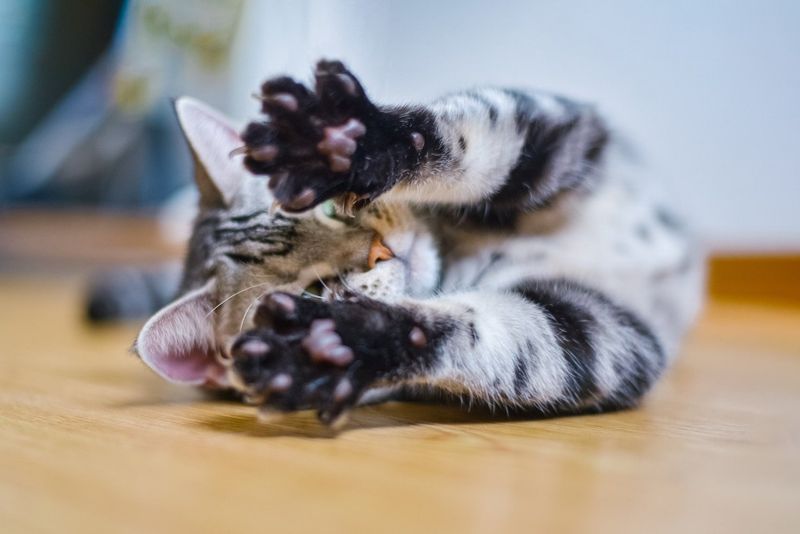
Cats have highly sensitive paws, equipped with numerous nerve endings that make them adept at sensing their environment. This sensitivity allows cats to detect temperature changes, vibrations, and textures.
Their paws are essential tools for hunting, as they help cats gauge the texture and movement of their prey. This sensory ability also aids in climbing and navigating various surfaces.
Understanding this feature can improve how we interact with our feline friends, ensuring their comfort and safety. Providing different textures and surfaces can stimulate a cat’s senses and offer enrichment.
It’s a remarkable aspect of feline anatomy, showcasing their adaptability and connection to their environment. Recognizing this sensitivity can enhance how we care for and understand our cats.
20. Unique Tail Language Of Cats
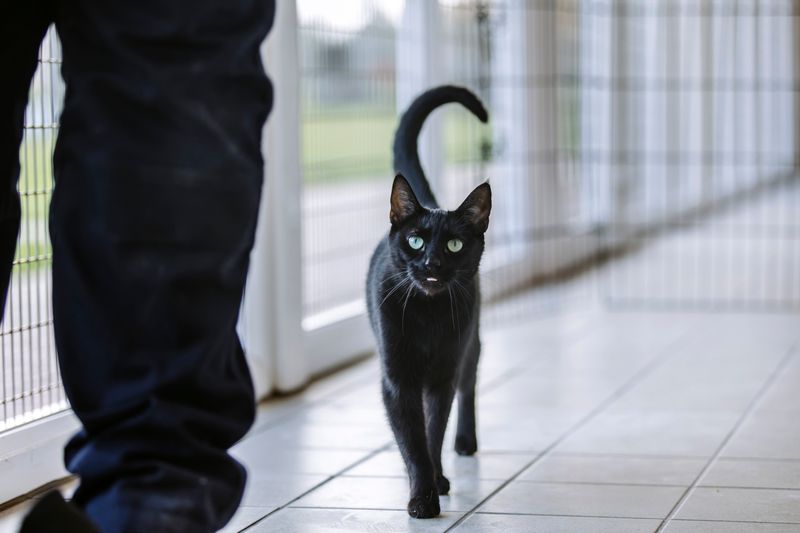
A cat’s tail is an expressive tool, conveying emotions and intentions through various positions and movements.
Unlike dogs, cats use their tails primarily for balance and communication. A tail held high often signifies confidence and contentment, while a twitching tail might indicate irritation or excitement.
Understanding these signals can help owners interpret their cat’s mood and respond appropriately. Observing tail language can strengthen the bond between humans and cats, fostering effective communication.
It’s an intriguing aspect of feline behavior, reflecting their complexity and ability to express themselves. Recognizing these cues can enhance interactions, making them more meaningful and harmonious.
21. The Feline Way Of Showing Affection
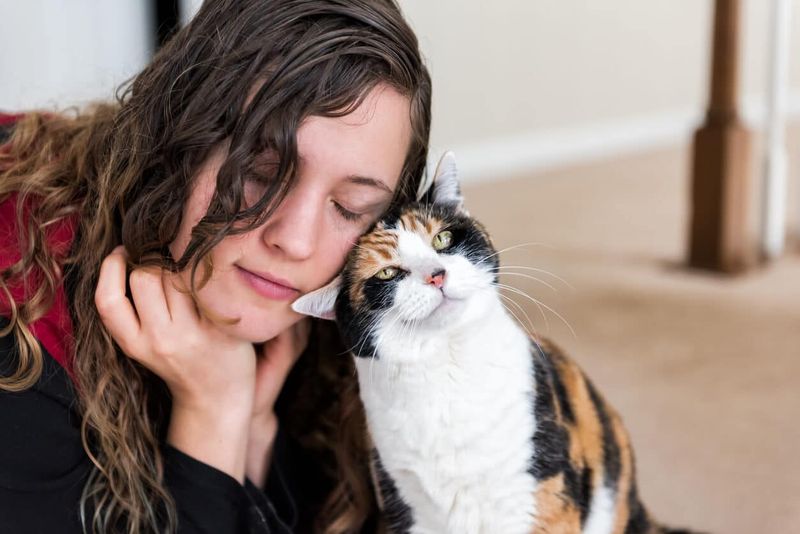
Cats have a unique way of expressing affection that differs from many other pets.
Known as “bunting,” this behavior involves cats head-butting or rubbing against their human companions. This action is not only a sign of love and trust but also a way for cats to mark their territory with scent glands located on their heads.
Understanding this behavior can deepen the connection between owner and pet, recognizing the subtle ways cats express their emotions.
Appreciating these gestures can enhance the human-cat relationship, fostering a bond built on mutual respect and understanding. It’s a beautiful aspect of feline communication, reflecting their social nature and desire for connection.
22. Cats And Their Method Of Self-Defense
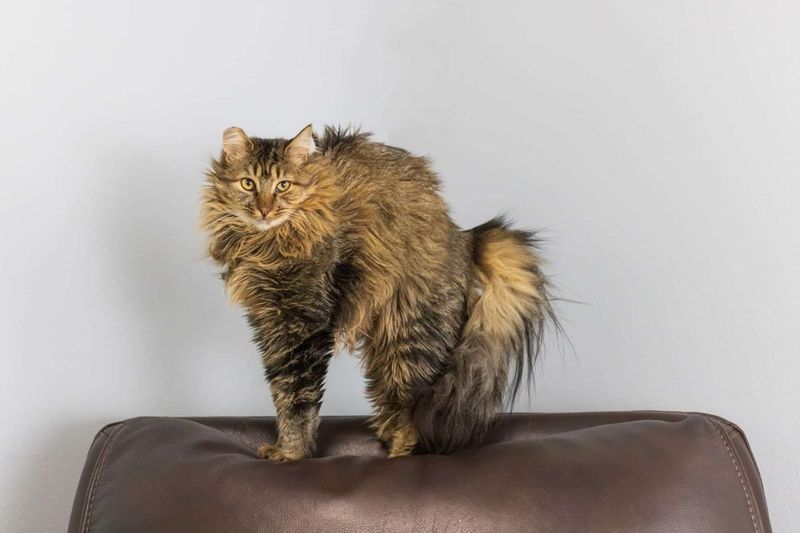
When threatened, cats have a unique method of self-defense that involves arching their back, puffing up their fur, and hissing. This display is meant to make them appear larger and more intimidating to potential threats.
Understanding this behavior can help owners recognize when their cat feels threatened or uncomfortable. Providing a safe and secure environment can prevent such displays and ensure the cat’s well-being.
Recognizing the signs of fear or stress in cats can guide owners in addressing the root causes and providing appropriate support.
It’s a fascinating aspect of feline behavior, reflecting their instincts and survival strategies. Appreciating these responses can enhance the care and understanding of our feline friends.
23. Feline Breathing Pattern
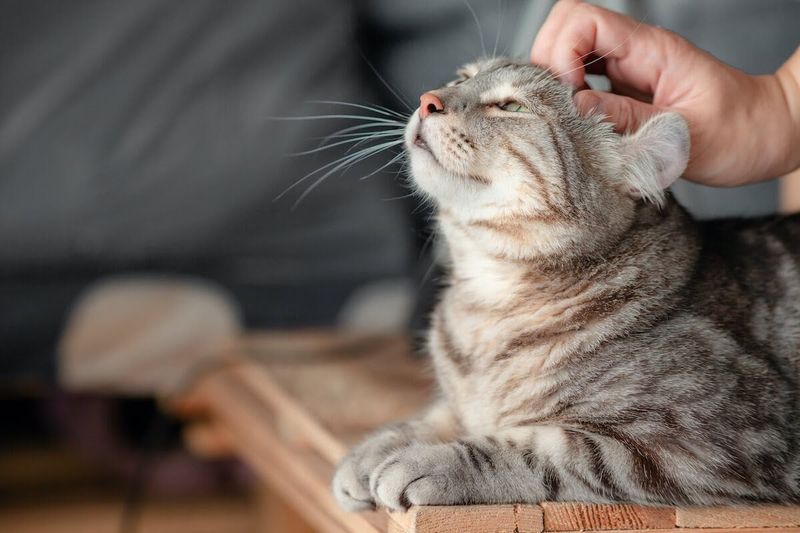
Cats have a unique breathing pattern that reflects their calm and relaxed nature.
When at rest, they breathe slowly and deeply, often accompanied by a rhythmic rise and fall of the chest. Observing a cat’s breathing can provide insights into its health and emotional state.
Rapid or labored breathing might indicate stress or illness, requiring attention and care. Understanding these patterns can enhance how we monitor and support our pets.
Providing a tranquil environment can promote healthy breathing, contributing to a cat’s overall well-being.
It’s a subtle yet important aspect of feline life, reflecting their adaptability and sensitivity. Recognizing these signs can improve the quality of care and deepen the bond between owner and pet.
24. Cats And Their Preference For Box Geometry
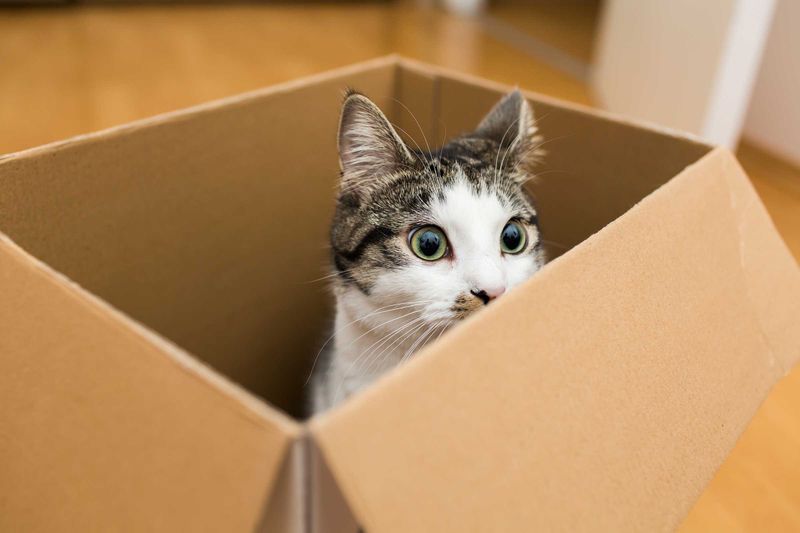
Many cats display a curious preference for geometrical shapes, especially boxes, regardless of the box’s complexity.
This fascination goes beyond mere play; it provides a perceived sense of security and territory. Inside a box, cats can hide or observe their surroundings with a feeling of being insulated from potential threats.
This behavior is deeply rooted in their instincts for safety and comfort. Moreover, the confines of a box allow them to conserve body heat and feel physically supported.
Next time you spot a cat in a box, remember that it’s more than just play – it’s comfort and survival.
25. Cats’ Ability To Find Their Way Home
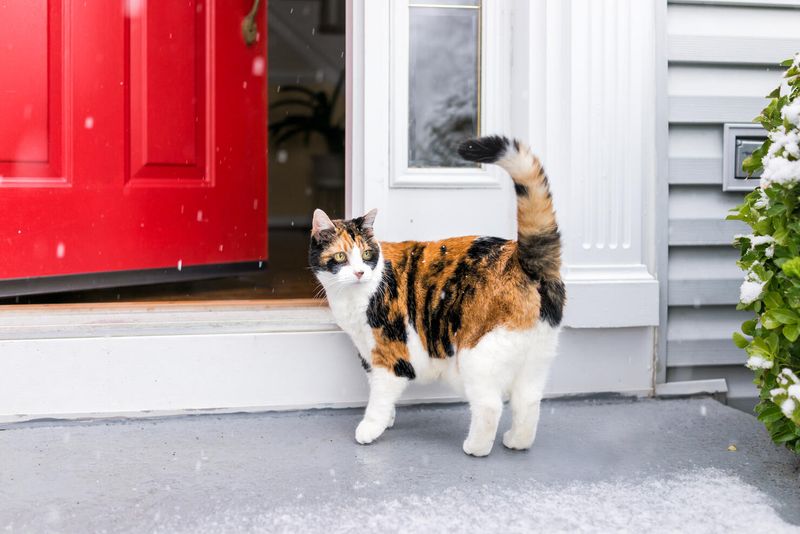
Cats possess an extraordinary homing ability, often finding their way back home from miles away.
This skill is thought to be linked to their acute senses and possibly even the earth’s magnetic fields. Stories abound of cats traveling long distances to reunite with their owners, showcasing their loyalty and determination.
If your cat roams outdoors, ensuring they are microchipped can provide peace of mind, as their natural navigation skills are quite impressive.
26. Cats’ Fascination With Water
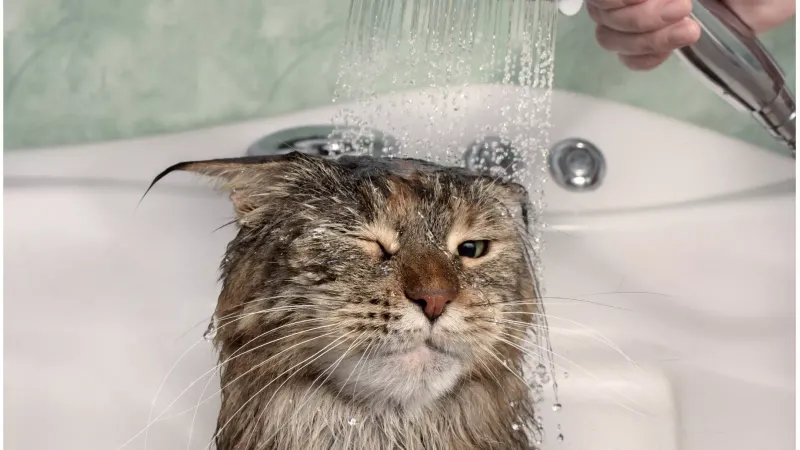
While cats are often associated with an aversion to water, many felines are actually intrigued by it. Watching the ripples in a pond or the droplets from a faucet can captivate them for hours. This fascination might stem from their wild ancestors, who relied on water sources for survival.
Interestingly, some breeds like the Turkish Van are known to enjoy a splash. Whether it’s the gentle plop of a water droplet or the shimmer of light on water, cats’ interest in this element remains mysterious and enchanting. Could it be their innate curiosity or a playful spirit at play?
27. Whisker Fatigue In Cats

Whiskers aren’t just for show; they serve as a vital sensory tool. But did you know cats can experience whisker fatigue? This occurs when their sensitive whiskers are overstimulated, often from constant contact with the sides of food bowls.
Cats may become irritable or reluctant to eat if their whiskers are overloaded. To alleviate this, pet owners can offer wide, shallow dishes.
These tiny hairs, so crucial for navigation and sensory input, need a rest too. A balance between stimulation and relaxation keeps our feline friends in harmony, ensuring their whiskers remain an asset, not a burden.

